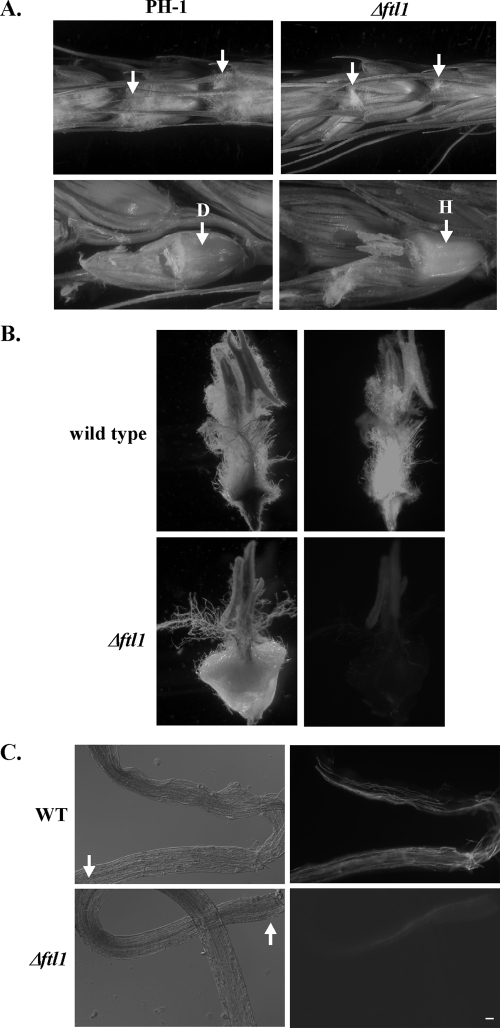FIG. 4.
Defects of the Δftl1 mutant in colonizing wheat heads through anthers. (A) Flowering wheat heads were inoculated with conidium drops of the wild-type (PH-1) and Δftl1 mutant strains at exposed anthers (marked with arrows). Photos were taken 5 dpi. Glumes were removed (bottom row) to examine hyphal growth and discoloration of the ovaries. The Δftl1 mutant grew on exposed anthers but failed to cause discoloration of the ovaries. D, diseased or discolored ovary; H, healthy wheat ovary. (B) Unexposed anthers were inoculated with conidium drops of GFP-tagged wild-type (GZT501) and Δftl1 mutant (RM1) strains. After incubating for 3 days, the ovaries with inoculated anthers were observed under light (left) and epifluorescence (right) microscopy. (C) After being separated from the anthers inoculated with conidium suspensions at 2 dpi, filaments were observed under differential interference contrast (left) or epifluorescence (right) microscopy. The Δftl1 mutant was defective in colonizing the filaments. Arrows points to the ends connected to the anthers. Bar, 20 μm.

